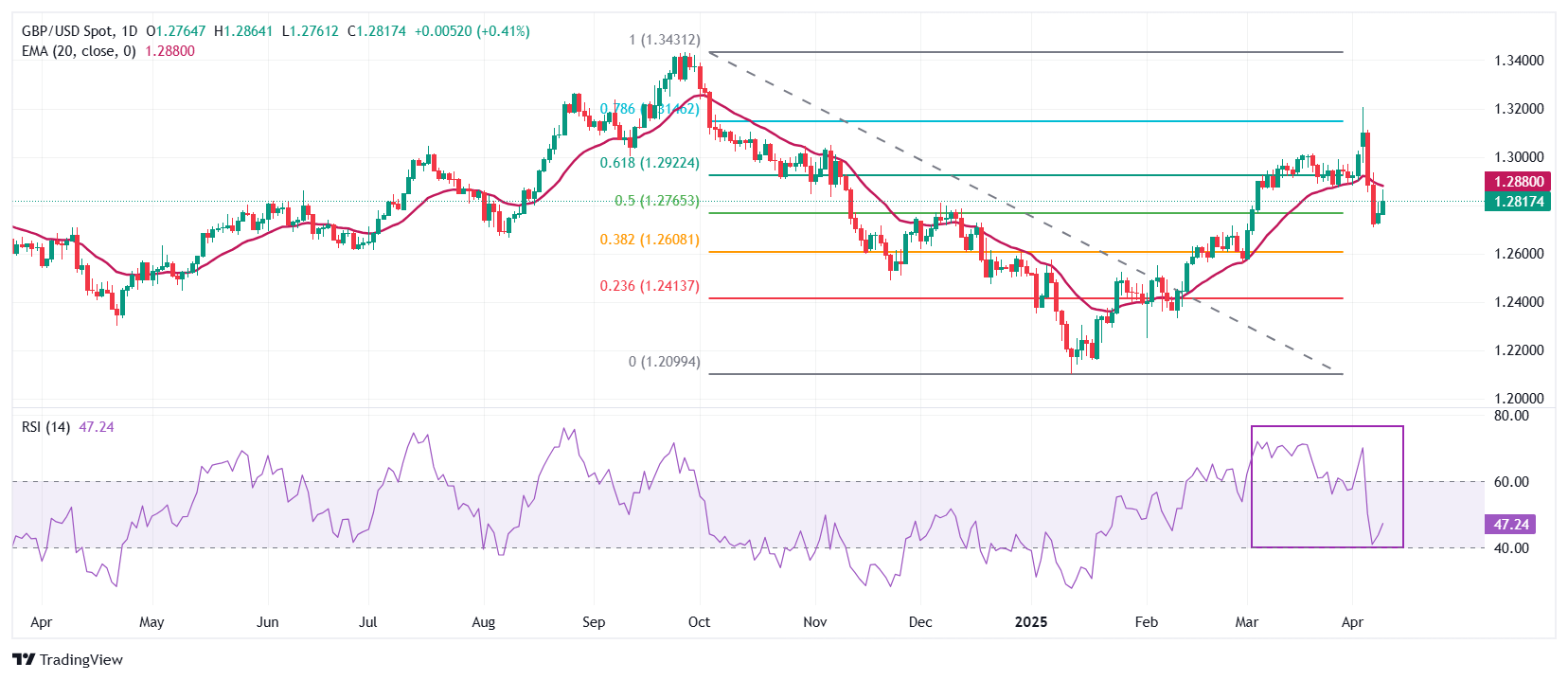-
The Pound Sterling gives up earlier gains against the US Dollar, slipping as the British currency lags behind its peers.
-
President Trump hikes reciprocal tariffs on China to 104% in response to Beijing’s latest retaliatory measures.
-
Deutsche Bank forecasts a 50 basis point interest rate cut by the Bank of England in May.
The Pound Sterling (GBP) declined sharply against major currencies on Wednesday, pressured by heightened selling momentum following warnings from the Bank of England's (BoE) Financial Policy Committee (FPC). The committee cautioned that significant shifts in global trade dynamics could threaten financial stability by slowing economic growth.
Mounting concerns stem from the United States' escalating protectionist stance, as President Donald Trump imposes aggressive tariffs on Chinese imports. Analysts at JPMorgan suggest that the rapid intensification of the US-China trade conflict could be severe enough to trigger a global recession.
China, often dubbed the world’s manufacturing hub due to its cost-effective labor force and government support, may redirect its exports to alternative markets if trade relations with the US deteriorate further. Such a shift poses a particular threat to the United Kingdom (UK), which may struggle to compete in a potential price war with Chinese goods.
Amid these developments, market participants have increased their bets on a more dovish BoE. Fears that Trump's tariff measures could send economic shockwaves through the UK have led Deutsche Bank to forecast a bold policy response. The bank expects the BoE to implement a 50 basis point rate cut at its May policy meeting—double the usual move.
The BoE’s cautious stance is driven by a notable drop in key survey indicators, a tightening of financial conditions, and growing concerns over labor market softness. These factors have collectively pushed the central bank toward considering a more aggressive policy adjustment.
Looking ahead, investor attention will shift to Friday’s release of key UK economic data, including monthly Gross Domestic Product (GDP) and factory output figures for February. Expectations point to a modest 0.1% growth in GDP, following a 0.1% contraction in January.
Daily Market Movers: Pound Sterling Retreats as US-China Trade Tensions Escalate
- The Pound Sterling (GBP) surrendered earlier gains on Wednesday, slipping to around 1.2765 against the US Dollar (USD) during the North American session. Despite broader US Dollar weakness driven by rising recession fears, the GBP/USD pair turned flat after an intraday climb.
- The US Dollar Index (DXY), which gauges the Greenback’s performance against six major currencies, dipped near the 102.00 mark as market sentiment soured on the back of renewed US-China trade tensions. During the European session, China announced an additional 50% in tariffs on US goods, on top of the 34% levied last week, effective April 10. These measures mirror President Trump’s retaliatory hike in tariffs aimed at countering Beijing’s responses and currency practices.
- Simultaneously, expectations of a Federal Reserve (Fed) rate cut continue to rise. Traders are increasingly confident that the Fed will lower interest rates at its June meeting, with CME FedWatch data showing growing dovish bets amid mounting economic uncertainty.
- Investors are now awaiting the Federal Open Market Committee (FOMC) minutes from the March policy meeting, set for release at 18:00 GMT. The Fed previously held rates steady at 4.25%–4.50%, while signaling the likelihood of two cuts later this year.
- Additionally, market attention turns to Thursday’s US Consumer Price Index (CPI) data for March, which could influence future monetary policy decisions.
Technical Outlook: GBP/USD Under Pressure Below 20-Day EMA
From a technical standpoint, the Pound remains under bearish pressure, trading below the 20-day Exponential Moving Average (EMA) near 1.2877. The 14-day Relative Strength Index (RSI) has bounced from the 40.00 level but remains fragile—failing to hold this threshold may trigger renewed selling.
Key support lies near 1.2610, marked by the 38.2% Fibonacci retracement from the late September high to the mid-January low. On the upside, resistance is seen at the psychologically significant 1.3000 level.

(Correction: The release time for the FOMC minutes has been updated to 18:00 GMT.)





